The Big Book of Controversies: Chapter VII

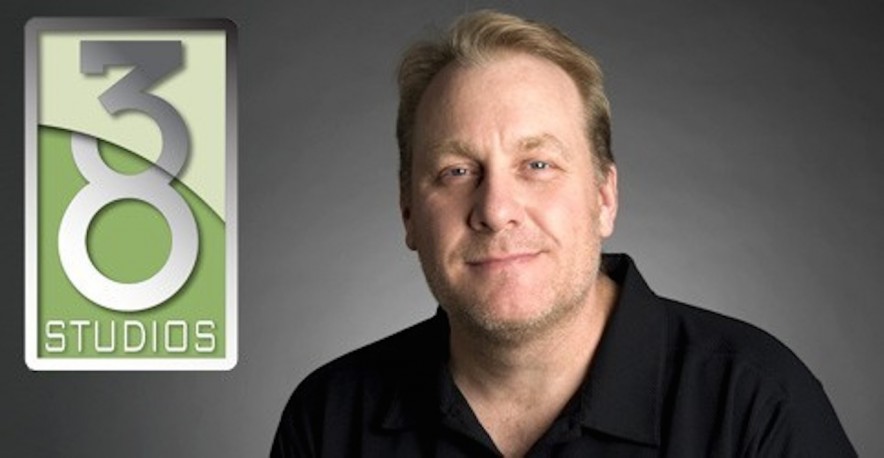
A Reckoning Cometh: Rhode Island vs. Curt Schilling
2006 – Current
In 2006, shortly before his pro-baseball retirement, Red Sox pitching star Curt Schilling began delving into the video games development scene, forming his own studio Green Monster Games, which he later renamed to 38 Studios to “more [accurately reflect] what our company is working to achieve.” Originally, Schilling attempted to gain financial security in the state of Massachusetts, but wasn’t gaining much traction. Frustrated, he then began to pitch his studio to several politicos, one of them being Rhode Island Governor Don Carcieri.
By 2010, the state was facing economic ruin. Its unemployment rate was pushing close to 12% – the fourth worst in the nation – with several cities and towns facing impending bankruptcy. Schilling’s pitch to build a large, multimillion dollar empire in the lucrative field of video games was enough to convince the governor and several prominent businessmen and politicians to invest a whopping $75 million to woo the legendary pitcher to the state. The problem was, the $75 million issued were bonds, making the state and Schilling beholden to bondholders in what’s known as “moral obligation” bonds. Technically, the state wouldn’t have to repay the bondholders, but with its considerable debt already in place, its credit rating would take a drastic and near-irreparable hit if it didn’t.
Promising to bring at least 450 new jobs to the state, Schilling hired legendary fantasy author R.A. Salvatore and comic book artist Todd Macfarlane to design the lore and setting of 38 Studios’ first big release, Kingdoms of Amalur: Reckoning (February 2012). Though not a critical flop, the title was met with moderate sales and a lukewarm critical response. However, the title was simply a staging release for Schilling’s bigger picture: taking the world setting and envisioning it into a Massive Multiplayer Online Role Playing Game, similar in concept to Blizzard and Activision’s perennial juggernaut, World of Warcraft.
However, with Kingdoms failing to gain considerable traction with players, this left the studio in dire financial straits. By May 2012, the developer had attempted to make a $1.2M loan payment to the state of Rhode Island, which subsequently bounced due to insufficient funds. Further compounding the issue, 38 studios had missed payroll to all employees for the same week. By May 24, 2012, 38 Studios made the announcement that as of that day, all employees were to be laid off and that the studio had ceased operation. In effect, Schilling had defaulted on the $75 million loan, and was unable to repay its debts.
All work that had been done to the MMO (codenamed Copernicus) ceased, and no one knows if the IP will ever see the light of day. Following this event, current Governor Lincoln D. Chafee, Carcieri’s successor, promised that the bondholders would be repaid. Rhode Island is currently suing Mr. Schilling and his partners, along with a raft of former state officials, banks and law firms involved in the deal, and a criminal investigation is, to date, still under way. In hindsight, Gov. Lincoln Chafee called the state’s unquestionable backing of the company as “the worst investment that’s ever been made, I think, in the history of Rhode Island.”
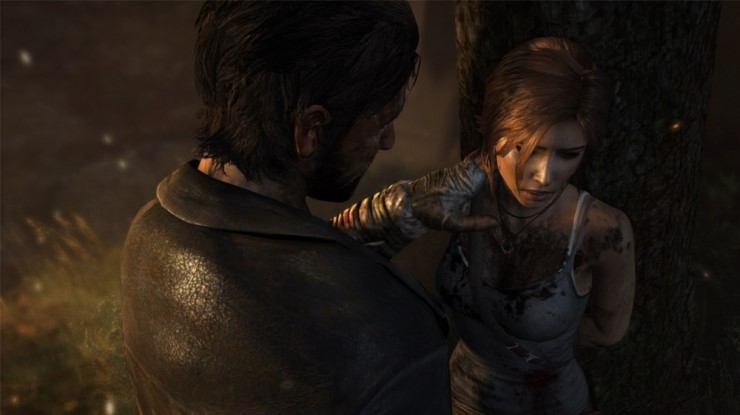
A Victim is Born – The Tomb Raider “Rape” Comment
2012
During their run-up of the critically received reboot of the Tomb Raider franchise, Crystal Dynamics, now a subsidiary of Square-Enix, attempted to outline Lara Croft’s beginnings by allowing players to guide this fledgling globe-trotter on her first official adventure on a mysterious island said to contain the lost kingdom of Yamatai. However, during one of the press releases prior to the game’s release, Crystal Dynamics’ Executive Producer Ron Rosenberg described one scene in particular, a scene in which she’s forced to take a life for the first time in her life, which caused something of a controversy with the franchise’s many fans.
“[She] gets taken prisoner by scavengers on the island. They try to rape her, and […] She’s literally turned into a cornered animal. And that’s a huge step in her evolution: she’s either forced to fight back or die..”
The mere suggestion of an attempted rape scene ignited discussion across the internet over the use of sexual assault to “define” female protagonists in their own storylines. As the discussion began to lean towards an outright boycott of the game, Crystal Dynamics’ studio head Darrell Gallagher attempted to clarify the statement as being in error.
“One of the character defining moments for Lara in the game, which has incorrectly been referred to as an ‘attempted rape’ scene is the content we showed at this year’s E3 and which over a million people have now seen in our recent trailer entitled ‘Crossroads’. This is where Lara is forced to kill another human for the first time. In this particular selection, while there is a threatening undertone in the sequence and surrounding drama, it never goes any further than the scenes that we have already shown publicly. Sexual assault of any kind is categorically not a theme that we cover in this game.”
PC Gamer, playing a pre-release demo of game, described the incident as creepy, but not as controversial as people belived it to be:
“This is about the creepiest thing I’ve had to do in the course of previewing a game: refuse to instruct my female character to defend herself against a guy who’s already touching her inappropriately. There are two prompts to fight back: hit one button as he leans in to knee him in the groin, and hit it again when he moves close to her face to bite his ear.
I ignore both. He leans into Lara’s ear to yell threats at her, then puts his hands around her neck and throttles her. When she falls to the ground, he shoots her in the head.
Hurray! It’s just a harmless murder!”
Subsequently, Tomb Raider went on to sell, by June of 2014, over 6.5 million units. It is currently available for the Xbox 360, PS3, Xbox One and PS4.
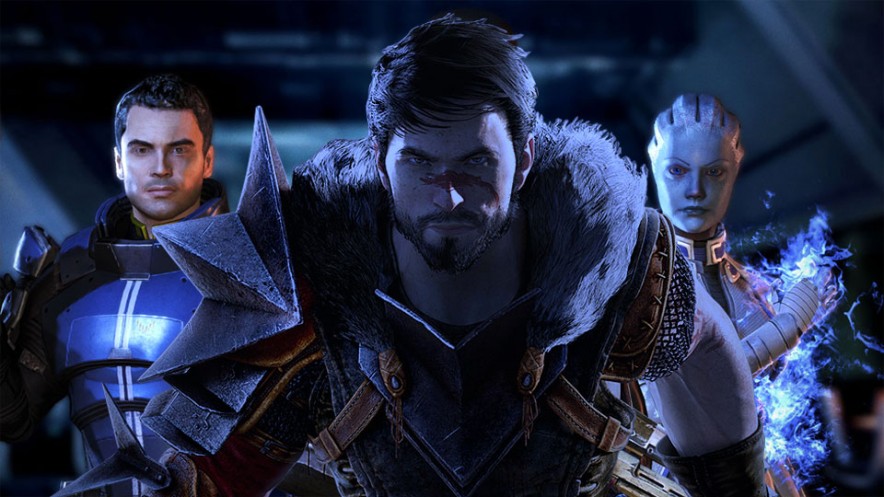
Red Green or Blue Dragons? – BioWare’s Dragon Age II and Mass Effect 3
2011 – 2012
Following a string of critical darlings such as Mass Effect, Dragon Age: Origins, and Mass Effect 2, BioWare’s oft-touted sterling reputation was about to face a critical backlash during the years of 2011 and 2012. Prior to the release of the follow-up titles Dragon Age II and Mass Effect 3, several key leads, who were instrumental in the narrative coherency began in both of the respective franchises, had left BioWare’s employ. Lead Designer Brent Knowles (Dragon Age Origins), and Lead Writer Drew Karpyshyn (Mass Effect) were two of those individuals. As often the case, sometimes following writers and leads do not have a firm grasp on the narrative, or decide to alter it ways that contradict what’s been laid out before them.
After handing writing duties off to David Gaider, whose major contributions to the series was in the character design and history of notable party members Zevran, Alistair, Cailan, Morrigan, Shale and Duncan, Knowles had left BioWare and the Dragon Age franchise to pursue personal interests. However, prior to his departure, the decision to transition Dragon Age from the previous tactical, turn-based combat (similar in design and function to BioWare’s previous Star Wars: Knights of the Old Republic titles) to more real-time combat and the inclusion of a “dialogue wheel” to replace the dialogue response list from the previous Dragon Age title seemed to cause some friction between the leads. As posted in his personal blog, Knowles voiced his concerns that these decisions might even be a turn off for some fans:
“Discussion on Dragon Age 2 began around this time and looking ahead I knew that I wasn’t going to be satisfied with what Dragon Age 2 would be. Party control/tactical combat are huge factors in my enjoyment of a role-playing game as is adopting the role of the hero (i.e., customizing my character). I was fairly certain Dragon Age would transition towards more of a Mass Effect experience, which while enjoyable is not the type of role-playing game I play. Could I be the lead designer on such a title? Certainly… though if I were going to work on a game adopting a set-in-stone protagonist I’d rather work on something lighter, like a shooter.”
And while Dragon Age: Origins had roughly five years to develop, BioWare, now under the full control of Electronic Arts, announced that the game would be ready in roughly a year and a half. While not necessarily a bad thing, the decision did not garner much support from the fanbase. Upon its release in 2011 (2012 in Japan), many fans noted that this short gestation period had been detrimental to the title. Many of them complained that the environments were considerably smaller than the first game, and that many of the dungeons had been recycled ad nauseam. Many Fans also found the removal of race choices in favor of a human, yet voiced, protagonist to be limiting when compared to Origins. Critics also pointed out that the dialogue wheel also did not accurately portray the intended dialogue that players were lead to believe would be said, and that the newly revamped combat, though faster and more readier than the first Dragon Age game, felt too “arcadey” and “uninspired.”
All told, Dragon Age II sold considerably less (estimated at roughly 1 million units) than it’s predecessor (Origins’ 3.5 million), and was, according to some, one of the developer’s most divisively and critically received titles ever.
Perhaps the most damaging to BioWare’s reputation happened on March 6, 2012. Shortly after the release of the penultimate third chapter in their critically received Mass Effect franchise, players began to voice a growing displeasure over the title’s last few minutes, culminating in a solidifying outrage over the trilogy’s ending. Contrary to several pre-release statements, some made by now Lead Writer Mac Walters and Lead Director Casey Hudson, the ending itself was viewed as rendering previous character choices inconsequential, as well as contradictory or even dismissive of established gaming lore, narrative plot holes, inconsistencies or a lack of character history, and the absence of a final boss battle in favor of one-sided dialogue choices that ultimately lead to certain narrative coherency issues.
At first, BioWare maintained that, due to “artistic integrity,” they were holding true to the “original vision” of the game’s ending, and would not be elaborating, or altering it in any way. Despite that months prior, certain plot elements had been leaked online detailing the original endings, one of which included where the Reapers could ultimately win. BioWare’s own co-founders Ray Muzyka and Greg Zeschuk even discussed the incident in having a direct influence on the game, and that the feedback from fans who had viewed and read the script might just be used to tweak the story prior to release.
It wasn’t until an alleged Penny Arcade forum post that the “artistic integrity” argument began to fray. According to BioWare writer Patrick Weekes, who went by the username of “Takyris” on the forums, the decision to alter the endings at the last minute was due in part to both Casey Hudson and Mac Walters, who refused to put the decision to peer review.
I have nothing to do with the ending beyond a) having argued successfully a long time ago that we needed a chance to say goodbye to our squad, b) having argued successfully that Cortez shouldn’t automatically die in that shuttle crash, and c) having written Tali’s goodbye bit, as well as a couple of the holo-goodbyes for people I wrote (Mordin, Kasumi, Jack, etc).
No other writer did, either, except for our lead. This was entirely the work of our lead and Casey himself, sitting in a room and going through draft after draft.
And honestly, it kind of shows.
Every other mission in the game had to be held up to the rest of the writing team, and the writing team then picked it apart and made suggestions and pointed out the parts that made no sense. This mission? Casey and our lead deciding that they didn’t need to be peer-reviewed.
And again, it shows.
If you’d asked me the themes of Mass Effect 3, I’d break them down as:
Galactic Alliances
Friends
Organics versus Synthetics
In my personal opinion, the first two got a perfunctory nod. We did get a goodbye to our friends, but it was in a scene that was divorced from the gameplay — a deliberate “nothing happens here” area with one turret thrown in for no reason I really understand, except possibly to obfuscate the “nothing happens here”-ness. The best missions in our game are the ones in which the gameplay and the narrative reinforce each other. The end of the Genophage campaign exemplifies that for me — every line of dialog is showing you both sides of the krogan, be they horrible brutes or proud warriors; the art shows both their bombed-out wasteland and the beautiful world they once had and could have again; the combat shows the terror of the Reapers as well as a blatant reminder of the rachni, which threatened the galaxy and had to be stopped by the krogan last time. Every line of code in that mission is on target with the overall message.
The endgame doesn’t have that. I wanted to see banshees attacking you, and then have asari gunships zoom in and blow them away. I wanted to see a wave of rachni ravagers come around a corner only to be met by a wall of krogan roaring a battle cry. Here’s the horror the Reapers inflicted upon each race, and here’s the army that you, Commander Shepard, made out of every race in the galaxy to fight them.
I personally thought that the Illusive Man conversation was about twice as long as it needed to be — something that I’ve been told in my peer reviews of my missions and made edits on, but again, this is a conversation no writer but the lead ever saw until it was already recorded. I did love Anderson’s goodbye.
For me, Anderson’s goodbye is where it ended. The stuff with the Catalyst just… You have to understand. Casey is really smart and really analytical. And the problem is that when he’s not checked, he will assume that other people are like him, and will really appreciate an almost completely unemotional intellectual ending. I didn’t hate it, but I didn’t love it.
And then, just to be a dick… what was SUPPOSED to happen was that, say you picked “Destroy the Reapers”. When you did that, the system was SUPPOSED to look at your score, and then you’d show a cutscene of Earth that was either:
a) Very high score: Earth obviously damaged, but woo victory
b) Medium score: Earth takes a bunch of damage from the Crucible activation. Like dropping a bomb on an already war-ravaged city. Uh, well, maybe not LIKE that as much as, uh, THAT.
c) Low score: Earth is a cinderblock, all life on it completely wiped out
I have NO IDEA why these different cutscenes aren’t in there. As far as I know, they were never cut. Maybe they were cut for budget reasons at the last minute. I don’t know. But holy crap, yeah, I can see how incredibly disappointing it’d be to hear of all the different ending possibilities and have it break down to “which color is stuff glowing?” Or maybe they ARE in, but they’re too subtle to really see obvious differences, and again, that’s… yeah.
Okay, that’s a lot to have written for something that’s gonna go away in an hour.
I still teared up at the ending myself, but really, I was tearing up for the quick flashbacks to old friends and the death of Anderson. I wasn’t tearing up over making a choice that, as it turned out, didn’t have enough cutscene differentiation on it.
And to be clear, I don’t even really wish Shepard had gotten a ride-off-into-sunset ending. I was honestly okay with Shepard sacrificing himself. I just expected it to be for something with more obvious differentiation, and a stronger tie to the core themes — all three of them.
Weekes would later go on to say that the post in question was made from someone who had hacked his account, and that the entire post was nothing more than someone attempting to imitate him. Many fans argued that if this had in fact been Weekes, BioWare and EA would have either suspended or outright fired him for insubordination and possibly breaching his NDA. However, many critics also argue that, had EA and BioWare done so, it would have simply validated the gaming community’s argument that the information was legitimate and the company was attempting to silence dissent.
Fans soon formed a Facebook group known as the “Retake Mass Effect 3” movement, with the sole purpose of convincing BioWare to either change or alter the game’s ending by the sheer force of gamer unity. The page quickly garnered over 50,000 likes, and was instrumental in raising over $80,000 for the Child’s Play charity before it was taken down due to some fans, allegedly, being confused about the initial drive where they thought the money was being used to monetarily back a different ending to the game. Shortly after BioWare released the Extended Cut DLC however, the group apparently lost steam and driving force, and has been abandoned for almost three years now.
The interesting wrinkle to this whole story was how the gaming press had suddenly started to turn on its own audience. Gaming sites like IGN, in particular, considered the entire movement as nothing more than a small “super-minority” of gamers with entitlement issues; going so far as to state that, should BioWare “cave in” to consumer demands, that they would be setting a “dangerous precedent” in the industry. What IGN failed to point out was that this precedent had already been broken years ago by Bethesda after the original ending to 2008’s Fallout 3 was received with less than welcoming arms. To their credit, they rectified that after they added the “Broken Steel” DLC which allowed players to continue exploring the capital wasteland long after the main plot’s ending.
Strangely, however, BioWare did eventually alter course, despite the gaming narrative that this was all a “super minority” of gamers driving the issue online. On April 5, 2012, the developer announced the team was hard at work at creating a free DLC patch that would expand upon the ending with cinematic cut-scenes and add in additional dialogue with the Crucible / Starchild. However, overall, BioWare stated that it would not replace the current ending itself.
All told, the game was said to have sold a little over 2 million units. Despite winning several RPG of the Year Awards, many fans consider Mass Effect 3 the worst RPG experience in the last decade. Greg Zeschuk and Ray Muzkya eventually left the company they both co-founded in 1995, with Casey Hudson himself following suit on August 7, 2014. Dragon Age Inquisition, still being penned by Gaider, released to better reviews than its predecessor, most recently winning both RPG and Game of the Year awards at the 2014 Game Awards ceremony. Mass Effect 4, meanwhile, was officially announced at PAX East 2013, and is still deep in production.
But you see, the whole incident starts to set into motion certain ideas and notions. The notion that certain gaming sites were becoming even more morally and spiritually corrupted by the very industry they were supposed to view with an unbiased, neutral eye. Once sterile gaming news had slowly been replaced by clickbait “op-eds” and paid (but not disclosed) promotional fluff pieces. For while Gerstmann-Gate and Dorito-Gate may have been the tip of the spear, Mass Effect 3 had become the hilt-buried stab of the knife through the gaming community’s heart.
But the storm of controversies is far from over, my fellow gamers. For you see, slowly building strength on the horizon was the dawn of a new console era. One that would change Sony’s fortunes for the better, and leave many asking the simple question of:
“Microsoft, what the hell are you doing?!”
To Be Continued in Chapter VIII…
To discuss any of these controversies, feel free to visit our forum post dedicated to this series!

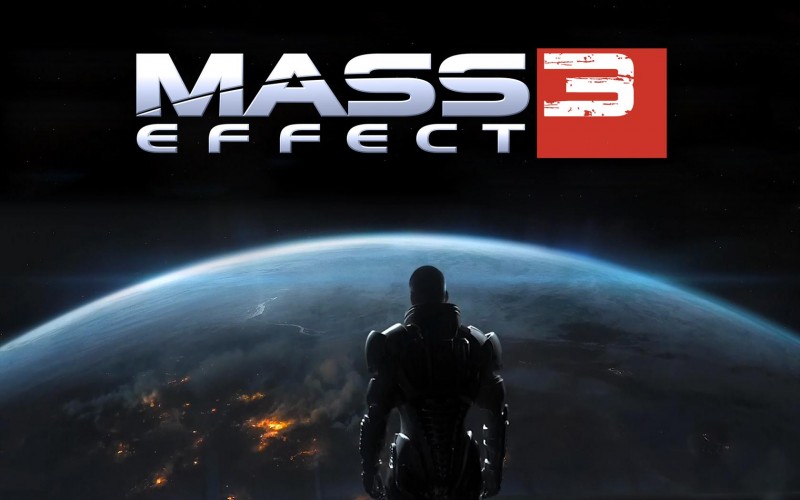
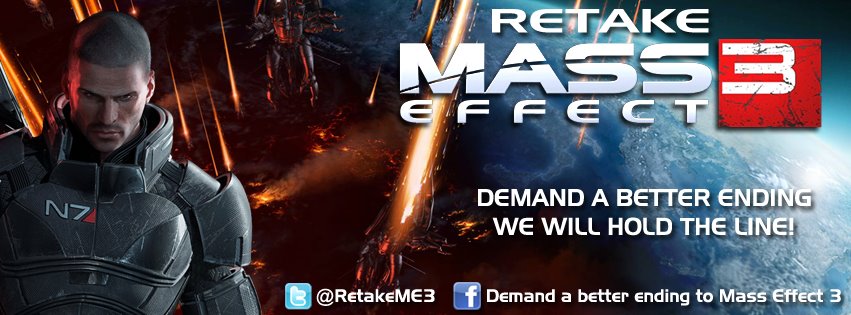







Leave a Reply